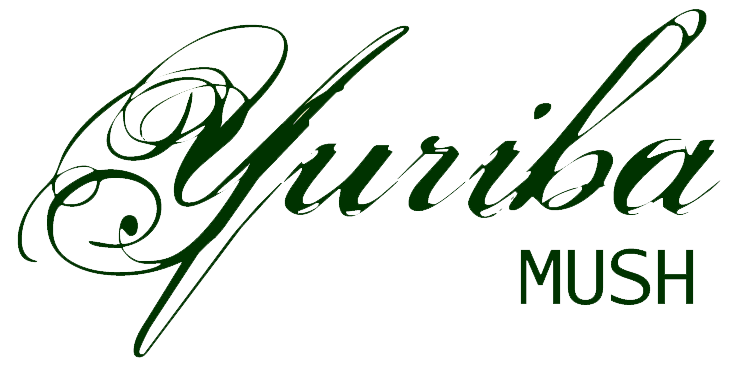Ancient Era
The Ancient Era pertains to the history of Yuriba from when it formed approximately 380,000 years ago up until roughly 5,000 years ago.
Contents |
Formation
The island of Yuriba was the result of volcanic activity approximately 380,000 years ago. It rose out of the ocean, beginning with the peak of Inishie-san. After a few hundred years, copious geologic turmoil in the area yielded a piece of land roughly analogous in size and shape to the modern Yuriba; erosion and geological activity have caused some reformation, particularly in the west and south. The ley lines are thought to have contributed to the rapid ascension of the island, although there is evidence that it is still growing, albeit far less quickly due to Inishie's current, much slower rate of eruption.
Early life
| OOC: Canon Doubt and Uncertainty |
| Basically, none of this is set in stone, because in IC terms, no one is old enough to really know for sure!. |
There is some debate as to how people came to such an isolated island, especially because of its location inside the Devil's Triangle. It is theorized that the first intelligent Yuribans arrived by mystical forces (including, but not limited to, the energies of the ley lines) or from extra-dimensional interference, possibly between 9,000 and 10,000 years ago. Both have supporting evidence, but time has erased any certainty to the answer. However, mundane means cannot be completely discarded; The Lilians traded with other Pacific cultures (as well as some of magical origin or even further afield), so there is a clear likelihood that it was possible to navigate to the area.
Peoples
Two major identified cultures of young Yuriba have been identified so far: The Lily Civilization, and Underhill. The latter still exists in the current era.
Lily Civilization
- Main article: Lily Civilization
The Lily Civilization was comprised of mostly humans and dated from approximately 6000 BCE to 3000 BCE. They developed a written language known as Liliaceous A. Many of the ruins found on the island today can be attributed to the Lily Civilization.
Their social structure placed seniority above all else. The Lilians venerated the elderly and experienced; fragmentary materials suggest that the color red was used as a marker of the elderly and others in positions of importance. Partially translated texts and other artifacts suggest that the society had a government much like a tribe. One woman was the sole leader of the tribe, while each family had its own representative. This soon gave way to a primitive form of democracy around 4000 BCE.
Their pots and tools still survive. Decorating the pottery was not uncommon, and many depicted tales of goddesses. Some artifacts are made of materials not common to the area, and were either transformed by magical energies or acquired via trade.
At approximately 3500 BCE, Lily Civilization came to a dark point. Very little decorated pottery has been dated from this time, nor writings beyond that of necessary records. Weapons, however, were in high production due to a war with the Toltraua, a collection of people that departed from Lily Civilization. Eventually, the Lily Civilization was completely wiped out. It is known that up till their extinction around 3000 BC, human sacrifice was practiced upon Inishie-san.
Underhill
- Main article: Underhill
Unsurprisingly, the kitsune and fae of the Underhill culture associated only loosely with the people of the Lily Civilization, and even less so with the Toltraua. It is certain that Underhill society dates back to at least 4000 BCE, and possibly further. Small influences of the cultures of others have been found, such as in designs, but for the most part they were entirely separated.
Toltraua
- Main article: Toltraua
The Toltraua consisted of one hundred to one thousand people (surviving accounts vary) that broke away from Lily Civilization before 3500 BCE due to religious disagreements. They are named for their leader, Toltrau, who (Underhill records state) claimed to have received a vision that told her she must sever all ties with her current society and depart with many followers.
The Toltraua traveled to the forests, where they settled and lived peacefully for a short time, trading with Underhill. However, shortly after breaking away, they were hunted by the people of the Lily Civilization and war was declared. Their defeat was inevitable. The Toltraua managed to survive for a short time fighting essentially a guerrilla war before finally being destroyed.
Wildlife
In the years after Yuriba was formed, animals and plants appeared on the island sporadically. The magic upon the island changed their bodies, but many adapted to their new abilities and environment quite well.
Animals
Animal remains found on the island that are more than 300,000 years old are dubbed the Originating Species. Most of them tend to be the species from which the Yuriban animals of today descended. For instance, the oldest chic deer were not chic deer at all, but rather species indistinguishable from members of Cervidae common in the Asiatic sphere during that time period. It is generally agreed by archaeologists that they developed the ability to shed their coat within a few hundred years of arriving upon Yuriba, as indicated by a slight change in skull shape.
Where identifiable, virtually all animal remains are female, suggesting that the island's enforcement of strictly memetic reproduction has been in effect since even before the rise of the Lily Civilization.
Plants
The fur of animals contained seeds or spores of the land which from which they came, causing the Yuriban species of plants to be widely divergent and often of unusual geographic origin. Some species appear to have arrived via natural means, and a number more were introduced through trade during the height of the Lily Civilization.
